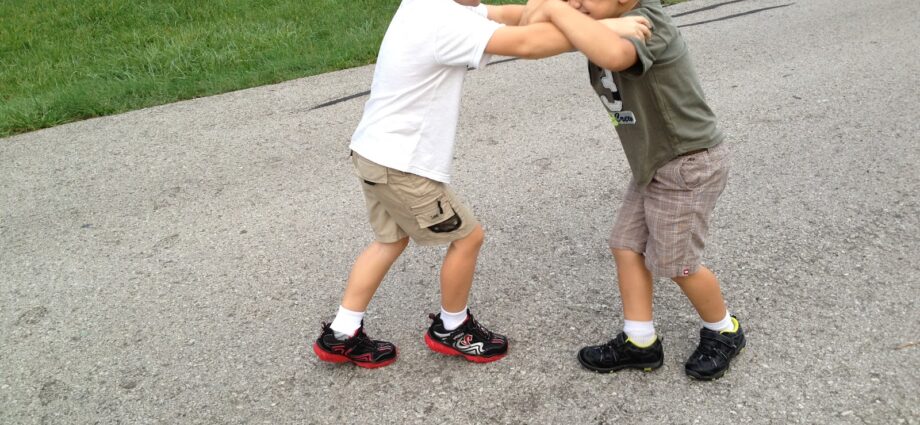Child fights with peers: what to do
If a child offends children, then life is not easy for him. The author of books on child psychology, Katerina Demina, recommends that parents quickly figure out why the baby behaves this way and teach him to cope with internal anger.
March 4 2018
There is nothing wrong with the fact that a preschooler is explosive and loud, these are features of temperament. Some children between the ages of 3 and 7 show aggression, thus focusing on themselves. Often circumstances provoke a baby to demonstrate physical strength. These are either parents who keep their son or daughter tight-lipped, or a provocateur, he may well be in the children’s team. If someone periodically calls names or teases the baby, sooner or later he will not react in the best way. Not necessarily hitting the offender, but taking out the anger on someone else. Try these six steps, they will surely lead you to peace in the house.
Start with yourself. In any situation, you must be calm and restrained. Control emotions and words, do not show irritation and discontent, even if there is a reason for this. Physical punishment is taboo. If you occasionally allow yourself to lightly slap a child, remember that he can take this technique into arms. And when he is in a bad mood, he will try it.
Instead of scolding for unworthy behavior, sit next to the baby, hug and have mercy. And then ask them to tell what happened, what is the reason for the anger. Try to listen carefully, ask questions. It is important for children to feel their mother’s love in any situation. In order not to lose confidence, often ask how your day in kindergarten or school went.
Explain patiently that people and animals should not be hurt. And be sure to offer a way out, say that fighting is prohibited, but you can say: “I’m terribly angry”, “I’m upset.” This will gradually build the habit of speaking out negative feelings. And even if in the team someone shows aggression towards the baby, he will know that this is not a reason to respond in kind. It is better to resolve conflicts peacefully, without fists.
If you manage to catch the moment when the child is annoyed and is about to break loose, say loudly: “Repeat after me, breathe!” And show me how to do it. You need to inhale deeply through your nose, clench your fists, tighten your muscles, especially the shoulders and facial muscles, and then exhale noisily through your mouth. After repeating this exercise several times, the rebel will switch over and quickly calm down.
Help your baby to express negative feelings. They cannot be suppressed, it is dangerous to health. You can hit a pillow, rug, punching bag. Let me shout monotonously, without words: “A-a-a!” If you give your child the opportunity to “live” the anger with his body, he will stop rushing at others.
Sign up the brawler in the sports section. Martial arts are suitable – aikido, wushu, kung fu. They will teach you how to breathe correctly, concentrate on internal sensations, and be aware of them.
It happens that the craving for fights arises during adaptation to the daily routine in kindergarten or the call schedule at school. An active child begins to throw out irritation on his peers. Passive – shows stubbornness, refuses to eat and play. These symptoms also need attention.










